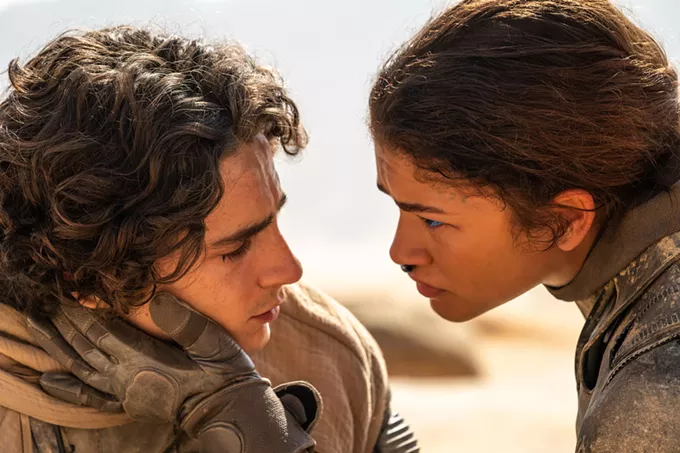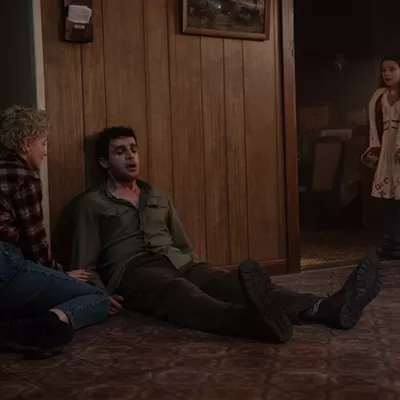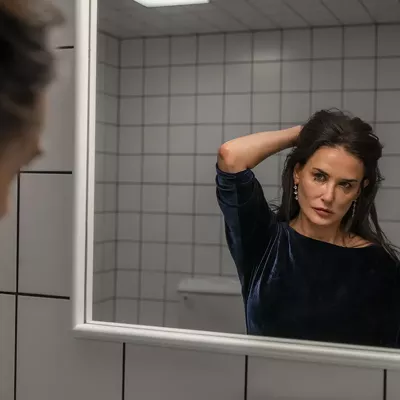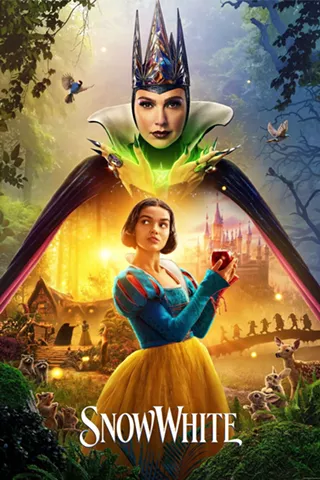
For all the compliments that can be paid to the 2021 film, director Denis Villeneuve had quite the task in translating Frank Herbert’s landmark 1965 science-fiction novel “Dune” to the screen. While splitting the famously dense story into two parts was mostly successful in allowing the first one the time needed to establish a world of grand scale, its characterization still felt underdeveloped given the story’s ambitions, leaving it at times cold if still engrossing.
Bigger and bolder than its predecessor, “Dune: Part Two” takes those building blocks and deepens its character arcs, and in turn the themes at the narrative’s core. Like an epic drama about religious fanaticism and the quest for power under the guise of sci-fi action spectacle, it mostly sticks the landing — even if its ending ultimately leaves a desire for more.
Picking up in the aftermath of the Harkonnens’ attack on House Atreides over control of the planet Arrakis’ spice, a naturally occurring substance that acts as a psychedelic but is also key to space travel, Paul Atreides (Timothée Chalamet) and his mother, Jessica (Rebecca Ferguson), are now living as nomads. Believed by their enemies to be dead, they join the planet’s natives, the Fremen. Meanwhile, the Harkonnens, under the leadership of Baron Harkonnen (Stellan Skarsgård), work to restart the harvesting of spice while attempting to eradicate the Fremen. As tensions rise among the desert people over the newcomers’ place with them and whether or not Atreides is their messiah, he and Fremen Chani (Zendaya) form a relationship while he sees visions of the arid Arrakis as an ocean world.
Although established characters and plot lines carrying over from the first installment (written by Villeneuve with Jon Spaihts and Eric Roth, the latter of whom does not return for the sequel) have the benefit of what came before, new characters admittedly run into some of the same issues that film had. Christopher Walken and Florence Pugh are chief among them as the emperor and his daughter, Princess Irulan; while it’s great to see both actors here, and their understated performances are a welcome context to the political chess being played in the film’s universe, the roles seem underwritten in comparison. Similar to Pugh’s character, Léa Seydoux briefly appears as Bene Gesserit Lady Margot Fenring, though her inclusion seems mostly intended to set up future stakes.
Much talked about has been Austin Butler’s turn as the sociopathic Feyd-Rautha. Introduced as a sadistic nephew and heir to the baron, he takes over operations after the failures of Beast Rabban (Dave Bautista) to regain control of Arrakis. Butler disappears into the role, though the character admittedly amounts to little more than a one-dimensional foe in the end.
Shot by Greig Fraser, the “Dune” films may not compare to the striking composition of Villeneuve’s works with cinematographer Roger Deakins (e.g., “Blade Runner 2049”), but they bring to the table their own sense of spectacle. From the sprawling deserts of Arrakis to the villains’ brutalist-inspired homeworld Giedi Prime and the high-contrast, black-and-white gladiator match in which Feyd-Rautha participates, audiences should know to expect a large-scale production if they’ve seen the first installment.
The tense opening is a highlight, which sees Atreides, Jessica and the Fremen take on a group of invading Harkonnen. Peppered throughout the film are scenes in which the savvy Fremen sabotage spice operations utilizing their knowledge of the environment, their small figures outwitting the Harkonnens’ massive technology and aircraft. It all culminates in a breathtaking, brief as it may be, final battle at Arrakis’ capital, Arrakeen, that finally realizes the potential of the ominous sandworms native to the desert planet.
Those who found the first part’s ending abrupt may have similar criticisms about “Dune: Part Two.” Even if it completes a thematic evolution for Atreides, it also serves as a dramatic setup to an even greater power struggle in the future. In an era of cinematic universes and films crafted with endings designed to bring audiences back for future sequels, this can lend to a feeling of wanting more by the time the credits roll — especially seeing as that more could be years out, with Villeneuve having teased his desire to adapt the second book “Dune: Messiah” but studio Warner Bros. yet to commit to such a project.
Long believed by some to be among the great unfilmable works of fiction, considering Chilean French filmmaker Alejandro Jodorowsky’s failed 1970s adaptation and David Lynch’s much-maligned 1984 film, Villeneuve has proven the opposite. Paired together the latest “Dune” films may not be the sci-fi game-changer some have claimed them to be, but they do contain a narrative that, as rendered on screen, is equal parts strange in its concepts, conventionally satisfying in its storytelling, and still thematically rich.
“Dune: Part Two” opens in theaters on Friday, March 1.











